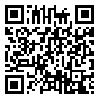BibTeX | RIS | EndNote | Medlars | ProCite | Reference Manager | RefWorks
Send citation to:
URL: http://tumj.tums.ac.ir/article-1-439-en.html
Normal
0
false
false
false
EN-US
X-NONE
AR-SA
MicrosoftInternetExplorer4
Background: Flexor tendon injury is one of
the unanswered problems in reconstructive
surgery of the hand. Although pull
out method is one of the best reconstructive approaches but still is controversial. Surgeons prefer immobilization to
prevent laceration at the site of the suture but it may cause adhesion and lead
to surgical failure. The aim of this study was to perform a new surgical method
to achieve a tendon repair without these problems.
Methods: In this case-series study, 80 fingers with
flexor tendon impairment selected and divided into four groups (tendon
laceration & avulsion, tendon graft reconstructed in 1 & 2 stages)
then patients were surgically treated by the new technique. The most important
aspect of the technique is the placement of the suture in the direction of
strength therefore, following any tension the suture would be tighter and this
point help us to mobilize the injured tendon immediately after the surgery then
we analyzed the results depends on the patient's group.
Results: The pull out and
surgical (functional) results were evaluated. 97% of the pull out results were
good and 3% were poor and surgical results were 23.9% excellent, 52.2% good, 17.9% fair and 6% poor.
Conclusion: Depend on the acceptable results, immobilization in
these patients is unnecessary & active and passive range of motion would be gradually
increased as soon as possible. However biomechanical studies would be
beneficial to evaluate this suture influence and designing future studies to
compare this technique with old methods would be essential.
| Rights and permissions | |
 |
This work is licensed under a Creative Commons Attribution-NonCommercial 4.0 International License. |





